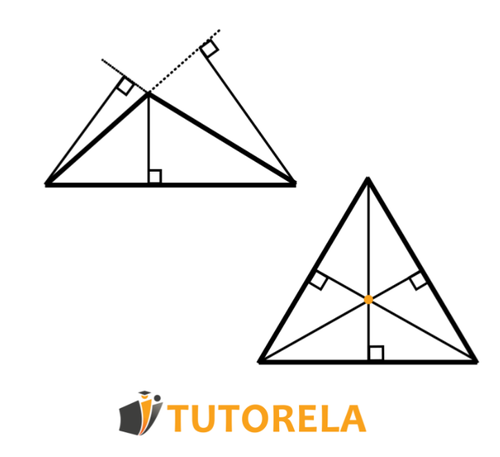The height of a triangle is the segment that connects a vertex to the opposite side such that it creates a 90-degree angle.
In every triangle, there are three heights, as there are three vertices from which the height can be calculated relative to the side that is opposite to each of them.
The height can be found either inside or outside of the triangle. If it does not run through the interior of the triangle, it is called an external height.
Below, we provide you with some examples of triangle heights:
